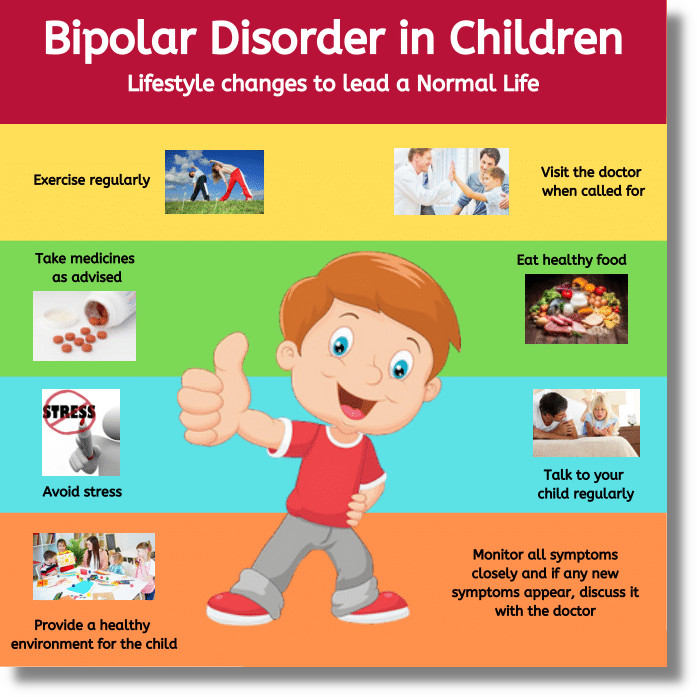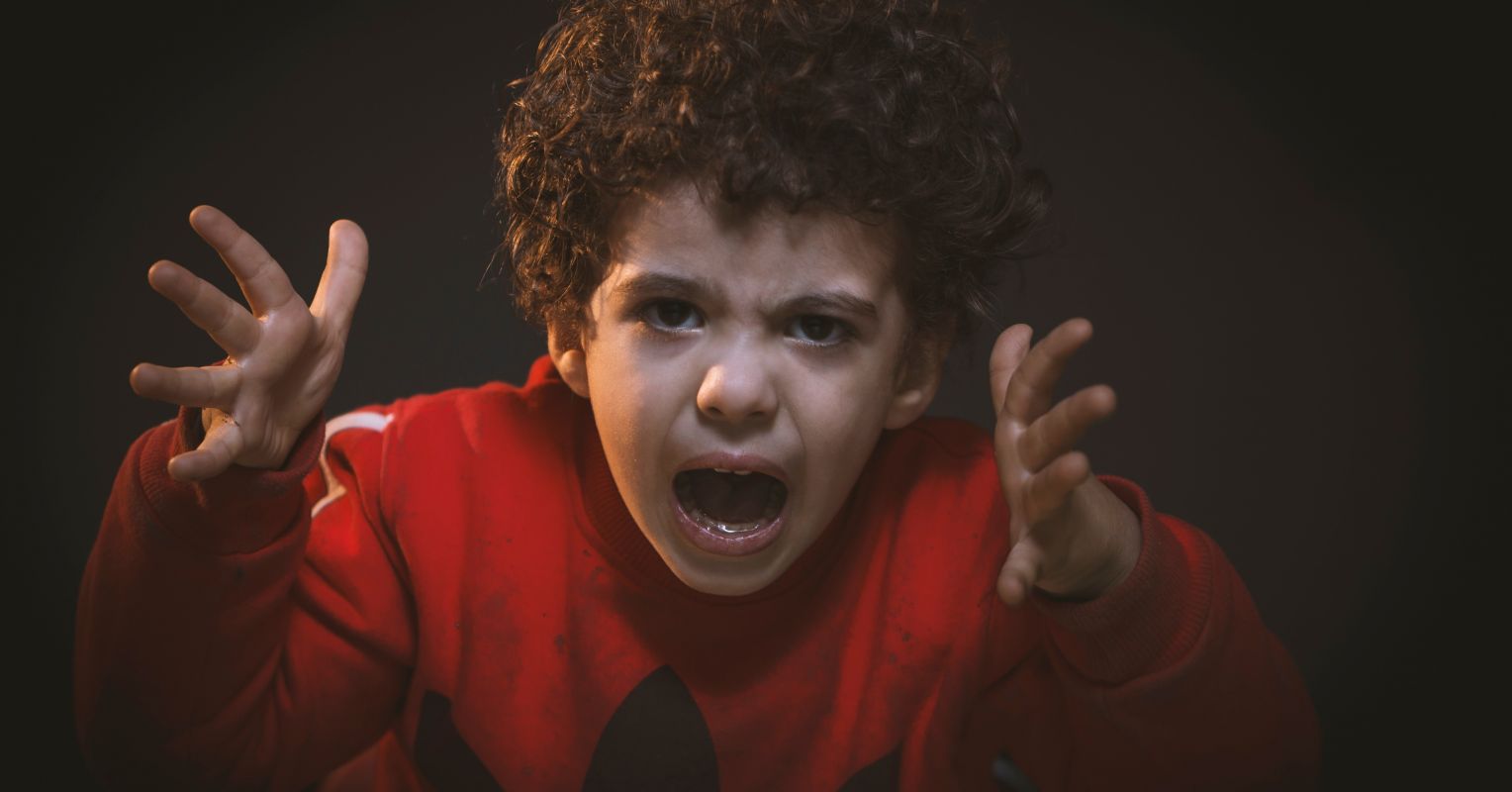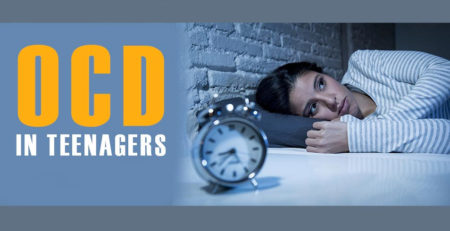Bipolar Disorder in Children: An Overview
Bipolar disorder is a mental health condition affecting approximately 2.5% of adults in the United States, and it can also occur in children. While bipolar disorder is typically diagnosed in adulthood, it often begins to manifest itself during childhood or adolescence. It is important to be aware of the signs and symptoms of bipolar disorder in children so that appropriate treatment can be provided.
What Is Bipolar Disorder?
Bipolar disorder is a mental health condition characterized by extreme changes in mood and behavior. People with bipolar disorder may experience periods of intense depression, followed by periods of elevated mood and activity levels (mania). The exact cause of the bipolar disorder is unknown, but it likely involves a combination of genetic and environmental factors.
Understand the diagnosis, what to do next, and access resources.
Parenting a bipolar teenager can be a daunting experience for any parent. It can be challenging to determine whether the intense mood swings are typical teenage behavior or if your child is struggling with bipolar disorder. If your child is exhibiting these behaviors to the point that they affect their daily life, such as at school or home, it could indicate something more than normalcy. Getting an official diagnosis from a healthcare provider is often necessary to identify and treat the condition. Knowing how to recognize and handle episodes of emotional highs and lows in young adults can help parents better manage their child’s bipolar disorder.
Bipolar disorder can be a severe and widespread condition for children that is often misunderstood. This condition fluctuates between two very different moods – manic and depressive episodes – where a child can feel extreme happiness one moment only to show signs of depression the next. Although it’s usually developed later in life, during the teenage years or early adulthood, bipolar disorder can sometimes appear in children and typically lasts a lifetime. The exact cause of this disorder is unknown. Still, many professionals are researching and studying possible causes to find a way to better detect and treat these symptoms in children in their early stages.
Children living with Bipolar Disorder face a formidable set of challenges. Their risk for developing problems like substance abuse, Attention Deficit Hyperactivity Disorder (ADHD), and Anxiety Disorders are significantly higher than those without the condition. Unfortunately, this increased vulnerability may extend to dealing with suicidal thoughts as well; bipolar disorder carries an exceptionally high risk for suicide attempts and completion. Therefore, families of children with bipolar disorder need to be aware of these potentially deadly complications, enabling early intervention and treatment that can improve quality of life and potentially save lives.
Bipolar diagnostic criteria
Here are the criteria for diagnosis from the DSM-5 (Diagnostic and Statistical Manual for Mental Disorders, Fifth Edition).
Bipolar I and II; The Behavioral Episodes
A Major Depressive Episode includes at least 5 of the following symptoms occurring over the same 2-week period and must consist of either #1 or #2:
A depressed mood is a condition characterized by a distressing emotional state that affects how we feel and behave daily. It usually involves feelings of sadness, loss of interest, and apathy or irritability. These feelings can be present most of the day, nearly every day, whether they are reported by us or others who observe us. This may present as an irritable mood in children and adolescents, leading to further difficulties and challenges. Suppose you or someone close to you is experiencing a depressed mood. In that case, seeking help from a supportive mental health professional is essential to improve symptoms before the situation worsens.
A depressed mood and a diminished interest or pleasure in all, or almost all, activities is an all too common symptom of depression. Research has demonstrated that this type of mood exists nearly every day for a prolonged period and can significantly impact the quality of life, work performance, sleep habits, and relationships with family and friends. Fortunately, however, several treatment options are available for individuals struggling with this issue, including psychotherapy and medications like SSRIs and SNRIs. It is essential to be open to seeking professional help to manage those symptoms appropriately to live a healthy and fulfilling life.
Weight fluctuations can be an indicator of bipolar disorder, especially in children. Significant weight loss or gain, as well as a decrease or increase in appetite nearly every day, could signify the presence of this disorder. In children, it’s essential to also look for instances where they are not meeting expected weight gains and not growing as expected. Early intervention is crucial to successful treatment outcomes, as with any mental health condition. If you are noticing changes in your child’s weight or appetite that alarm you, talk to your healthcare provider immediately; they can help determine if bipolar disorder might be the cause.
Psychomotor agitation and retardation are severe signs of mental distress, often as symptoms of anxiety and depression. Both can be broadly classified as problems with either excessive or reduced activity – the former is characterized by restless movement. At the same time, the latter reflects a slowing down of thoughts and physical actions. These symptomatic behaviors can last for days or weeks, often making it difficult for individuals to maintain their daily activities. With appropriate professional help and proper management techniques, these conditions are amenable to treatment, and individuals experiencing them should seek medical attention as soon as possible.
Feeling fatigued or lacking energy nearly every day can be incredibly draining and frustrating. On top of being weary, difficulty concentrating or focusing on specific tasks may also become apparent. Identifying potential causes leading to persistent fatigue is essential to determine the best course of action. Possible factors include inadequate nutrition, unhealthy lifestyle habits like insufficient sleep, medical conditions such as anemia, and stress from everyday life. With the help of your doctor and making changes to your eating and sleeping patterns, you can start to feel more energized and improve your overall well-being.
The presence of recurrent thoughts of death or suicidal ideation should not be taken lightly, as it is a severe warning sign and can have devastating consequences. It is essential to recognize the warning signs and seek help immediately if you notice persistent thoughts or ideas of death or suicide in yourself or a loved one. Professional mental health treatment may be necessary to resolve any underlying psychological distress at the root of these thoughts. Moreover, in some cases, medications might prove essential to supplement an individual’s therapeutic progress and restore emotional balance. Support networks are available for those directly affected by suicidal ideologies, and these sources can be beneficial in helping individuals mitigate their risk factors and better cope with their inner distress.

Manic and hypomanic episodes are characterized by extreme changes in mood, thinking, and behavior that can negatively affect daily functioning. During a manic episode, a person holds an elevated or irritable mood for at least one week; this is observed through a combination of three or four symptoms, depending on the predominance of either euphoria or irritability. Mania can also present as an alternating emotional state, swinging between the two with no particular pattern. During a hypomanic episode, which only requires that the person’s disruptive behaviors persist for four days, these emotional shifts must manifest themselves in observable changes that set the person apart from their baseline non-depressed mood. It is crucial to recognize signs of mania and hypomania quickly to get treatment and manage their effects.
Grandiosity, or an inflated sense of self-esteem, is a complex phenomenon that can range from an extreme level of confidence in one’s abilities to the delusional belief that one has unique expertise. On the former end of the spectrum, having assertive self-confidence may be beneficial; it can motivate someone to take risks which might lead to advancement and reward. However, bragging in the end can lead people to overestimate their capabilities resulting in impulsive decisions, such as taking huge investment gambles without adequate information or unsupported business endeavors. It is important for those exhibiting such behavior to adequately assess their qualifications before taking action because this trait could otherwise have significant negative consequences.
The ever-increasing demands of modern life have taken a toll on one thing – our sleep. With the rise of technology and more jobs requiring long hours, many feel pressured to achieve more with less time. This means people are trying to optimize their productivity by getting by with fewer hours of shuteye. While this may give us the short-term benefit of having more time in the day, it’s important to consider the potential long-term repercussions. We know that getting less than seven hours of sleep per night is associated with negative outcomes such as decreased cognitive performance, a weakened immune system, and an increased risk for obesity and chronic diseases. If we continue sleeping less and working more, these long-term effects could end up harming us far worse than any temporary gain in productivity.
Intensified speech is often characterized by loud, rapid talking that can be difficult to interrupt. This type of speech may focus on sound and theatrics to keep the speaker entertained while making their point. It can involve non-stop talking, whether or not people are interested in or participating in the conversation. Sometimes, it might be an angry tirade designed to overpower the other person’s views. Whatever its particular style, intensified speech should be taken seriously as it involves emotions that need to be addressed effectively.
Racing thoughts can be incredibly overwhelming, making it difficult to focus on anything. This phenomenon is commonly experienced by those with conditions such as anxiety or ADHD, but anyone can experience this sensation. Those who have gone through the feeling of their thoughts rapidly jumping in and out of topics know how chaotic it can feel for one’s mental well-being. While it can help to practice mindful techniques such as becoming grounded in the present moment, therapy can also effectively provide tools to manage these situations. Taking the time to process what is being felt and permitting yourself to feel all emotions without guilt are good steps that could prove beneficial when racing thoughts become unmanageable.
Distractibility, or the tendency to become overwhelmed and pay attention to irrelevant or unimportant things, is a common problem that affects many people of all ages. This tendency can have positive and negative effects on an individual’s daily life, including difficulty focusing on important tasks, decreased productivity, missed deadlines, and more. One of the best strategies to combat this problem is to create a focus plan for yourself which consists of short-term goals you want to accomplish. Additionally, it’s important to be aware of your environment to avoid situations that tend to cause distraction from the task at hand. Investing in mindfulness training can also help one build skills that enhance their ability to remain attentive and focused throughout the day.
An increase in goal-directed activity or psychomotor agitation can indicate an underlying psychological issue. These behaviors can signal cognitive distress related to manic episodes, anxiety, and other mental illness. For example, pacing or inability to sit still is often associated with anxiety disorders such as Generalized Anxiety Disorder (GAD) due to the feeling of restlessness. Excessive goal pursuit can also be connected to manic episodes caused by bipolar disorder or other mental illnesses. Seeking help from a medical professional is recommended to determine if the behavior indicates an underlying psychological condition that requires treatment.
It is important to remember that while engaging in pleasurable activities with high-risk consequences can be enticing, they can have life-altering ramifications. Participating too frequently in these activities will make them more normal, which can increase the average amount of risk taken. Severe effects can include financial ruin, physical harm, or even death. It is crucial to assess each situation individually and take steps to avoid excessive involvement in risky pleasures.
Although depressive or manic episode are distinct mental health issues that can seriously disrupt our daily lives, experiencing them together – known as mixed episodes – can mean more incredible difficulty in diagnosing the underlying problem. A mixed episode is characterized by the presence of symptoms from both depression and mania over at least one week. To be clinically recognized, these episodes must also impact everyday functioning that cannot be plausibly attributed to another illness or situation. Therefore, when seeking a medical diagnosis for the behavior accompanying such episodes, it’s essential to be aware of the time the symptoms have been present and their actual effects on one’s daily functioning.
Bipolar I and II; The Difference
Bipolar I Disorder
Bipolar I Disorder is characterized by episodes that can take various forms, from manic, depressive, or mixed features. In this disorder, six sub-diagnoses are determined depending on the type of Episode the patient has most recently experienced and those they have gotten. It’s important to note that two diagnoses don’t necessitate Major Depressive Episodes. Therefore, parents of bipolar teenagers need to understand all six diagnoses and how they differ to identify which disorder their teen has correctly.
Bipolar II Disorder is a form of mental illness characterized by shifts in mood and energy levels, though not to the extent seen with Bipolar I. People with Bipolar II experience Major Depressive Episodes where they feel extreme sadness beyond the normal fluctuation of their day-to-day emotions. Hypomanic Episodes are typically marked by increased energy, enthusiasm, and impulsiveness. For someone to receive a Bipolar II diagnosis, there must be at least one Major Depressive Episode occurring in conjunction with at least one Hypomanic Episode. These experiences can often last for several days or weeks, disrupting everyday life and making it difficult to do daily activities.
Signs & Symptoms
The signs and symptoms of bipolar disorder can vary depending on the age and gender of the child. Common signs and symptoms include rapid changes in mood, irritability or aggressive behavior, difficulty sleeping or sleeping too much, difficulty concentrating or paying attention, poor decision-making or impulsiveness, low self-esteem or feelings of guilt or worthlessness, and loss of interest in activities they used to enjoy. In addition, some children may also experience physical symptoms such as headaches or stomachaches.
Treatment Options
Taking any signs or symptoms seriously is vital if you think your child may have bipolar disorder. Treatment options for this condition include therapy (both individual counseling and family counseling), medication (such as antidepressants), lifestyle changes (such as increasing exercise and reducing stress), and alternative treatments (such as herbal supplements). The type(s) of treatment recommended will depend on the severity of the symptoms your child is experiencing. Working with your child’s doctor to develop a treatment plan that works best for them is essential.
For parents whose children are struggling with bipolar disorder, it’s important to know that treatment options can help manage the condition’s symptoms so your child can live their life to the fullest potential possible. If you think your child might have bipolar disorder, make sure to consult with their doctor about getting an accurate diagnosis and creating an effective treatment plan for them. With proper care and support from both medical professionals and family members alike, children with bipolar disorder can lead happy, fulfilling lives despite their struggles.
Contact us today at 816.819.5166 or schedule your appointment online.












